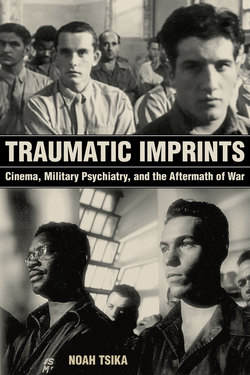Traumatic Imprints

Реклама. ООО «ЛитРес», ИНН: 7719571260.
Оглавление
Noah Tsika. Traumatic Imprints
Отрывок из книги
Traumatic Imprints
Cinema, Military Psychiatry, and the Aftermath of War
.....
With its reflexive emphasis on the effective translation of typed “psychiatric notes” into a dynamic documentary film, The Inside Story of Seaman Jones seemed to concur. When, in the early 1950s, the film was essentially “retranslated” into written form, the resulting mass-market paperback (entitled simply The Inside Story and written “under the direction” of Yale psychiatrist Fritz Redlich and VA psychologist Jacob Levine) contained a “layman’s preface” explaining that cartoons can be reliable conveyors of psychoanalytic insight. Much as the film features animated sequences that purport to visualize the “inner workings” of the human mind, the book boasts over one hundred cartoons portraying various “human predicaments”—all of them reminders of the film’s mimetic flexibility, its insistence that psychoneuroses can be modeled in many ways.75
It is now widely accepted that, as Damion Searls puts it, “World War II was the turning point in the history of mental health in America.”76 Less understood is the role that cinema—and, in particular, nontheatrical nonfiction film—played in this process. If, in Ellen Dwyer’s words, World War II “helped psychiatrists move out of the asylum and into the community at large,” documentary films were among the most reliable vehicles for their transportation, not only translating medical knowledge into vernacular terms but also familiarizing audiences with the faces, voices, and clinical techniques of particular therapists.77 The military had long since accepted the superiority of audiovisual media to more “static” pedagogic forms as a means of educating enlisted men and women about psychological matters. This institutional shift from written documents, such as the Selective Service’s Medical Circular No. 1 (1940)—derided by psychiatrist Harry Stack Sullivan as “a child’s guide to psychiatric diagnosis”—to more sophisticated audiovisual techniques laid much of the discursive and material groundwork for the later use of “therapeutic films” in a wide variety of civilian settings.78
.....